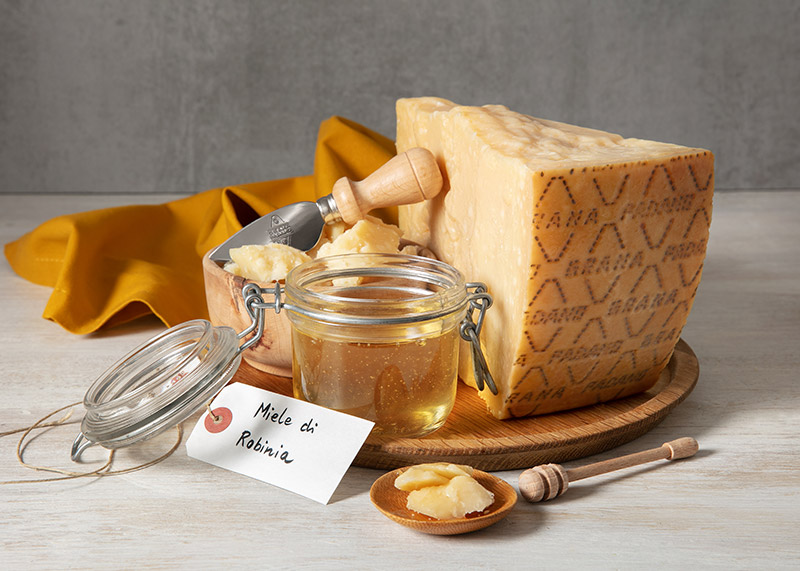
Acacia honey
Honey
Large quantities of Acacia honey are made on mainland Italy, above all in Lombardy, Piedmont, Veneto and Emilia Romagna, with some also made in other regions, from Tuscany to Calabria. These include two acacia honey PDOs from Varese and Lunigiana. It is also made in large quantities in Eastern Europe.
False acacia is a native species introduced to France in the late 16th century as a decorative tree. It is now found throughout Italy up to an altitude of around 1000 metres and is mainly considered an invasive species. The flowering, and thus honey making, period occurs approximately in April and May.

Characteristics:
– Colour: very pale, almost colourless to straw yellow. It crystallises very late and can become cloudy but almost never completely crystallised.
– Fragrance: delicate, subtly warm aromas of beeswax and vanilla, with candy floss nuances.
– Aroma and flavour: delicate with nuances of sugared almond, icing sugar and vanilla. The flavour is very sweet, warm and velvety.
– This is a fairly conventional pairing, ideal for those who prefer delicate, sweet flavours, to be eaten almost as if it were a dessert or a delicious snack. The mild vanilla taste of acacia honey creates a delicate contrast with the savoury quality of young Grana Padano cheese, with its buttery and mildly spicy notes.
Serving method:
We always recommend serving an assortment of honeys, perhaps two very different ones, so leaving diners to decide for themselves. Honeys should not be put onto cheese prior to serving both because this does not leave the choice to diners but also because the high osmotic pressure of honey tends to lead to it absorbing the cheese’s salty liquids in the space of just a few minutes. Try the two on their own first before testing the various pairings.
The honeys should be served in small containers, and a teaspoon for serving it. Liquid and creamy honeys can be used as they are. Compact crystallised honeys can be stirred before transferring the honey from the jar to the serving container to make them easier to serve, scraping off the required quantity.
Curious facts
Its pale colour and liquid consistency makes this one of the best known and most popular honeys.
Over recent years, unfavourable weather conditions, with rain and sudden temperature drops in the flowering period, have damaged production, making this generally easy-to-source product into a sought-after rarity.
It is always liquid because of its high fructose and low glucose levels.
It is easy to source both locally and at large-scale retailers.
